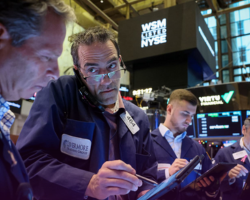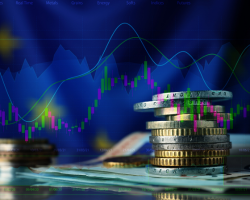Wall Street Ends Positively Amidst Treasury Yield Pause and Inflation Anticipation; Gold and Eurozone Inflation Data Create Market Ripples | Daily Market Analysis
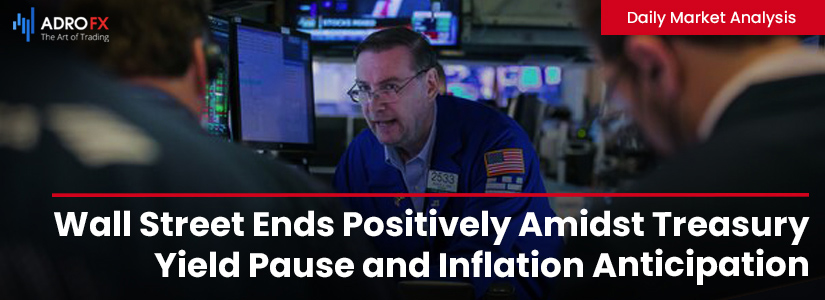
Key events:
- UK - GDP (QoQ) (Q2)
- UK - GDP (YoY) (Q2)
- Eurozone - CPI (YoY) (Sep)
- USA - Core PCE Price Index (MoM) (Aug)
- USA - Core PCE Price Index (YoY) (Aug)
The main indices of Wall Street closed in positive territory on Thursday, with investors carefully analyzing the latest economic data while keeping an eye on a pause in the surge of Treasury yields ahead of a significant inflation report. Additionally, investors were monitoring developments in Washington to gauge whether US lawmakers would manage to avoid a government shutdown.
The recent surge in Treasury yields, reaching 16-year highs, cast a shadow over the stock market, prompting a retreat after the Federal Reserve's recent signal of a long-term hawkish stance on interest rates.
The Dow Jones Industrial Average increased by 116.07 points, or 0.35%. The S&P 500 gained 25.19 points, or 0.59%, while the Nasdaq Composite surged by 108.43 points, or 0.83%.
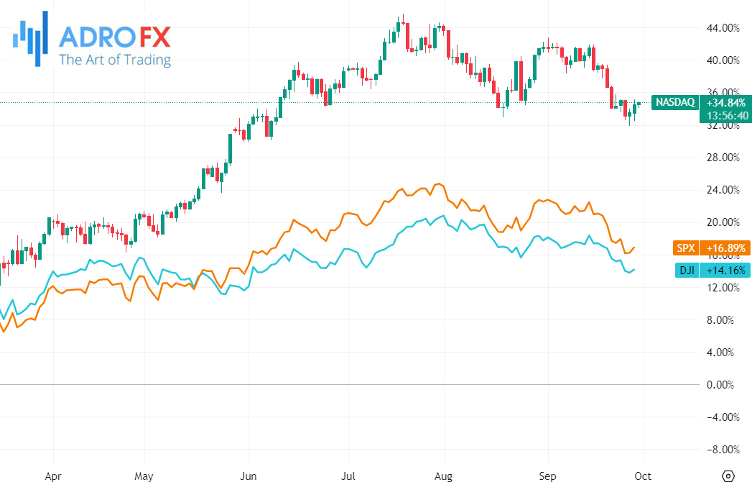
Within the S&P 500 sectors, the communication services group rose by 1.2%, and materials saw a 1% increase. In contrast, the utilities sector, sensitive to interest rates, declined by 2.2%, extending its recent downturn.
Although the S&P 500 had retreated by over 6% since late July, it maintained a 12% gain for the year 2023.
Major technology companies like Alphabet Inc Class A (NASDAQ: GOOGL) and Meta Platforms Inc (NASDAQ: META) played a pivotal role in the broader market's rebound as US Treasury yields eased from their recent highs.
Apple (NASDAQ: AAPL), on the other hand, finished the day with slight gains, facing ongoing challenges to its stock due to reports of multiple issues, including overheating, with users of its newly launched iPhone 15.
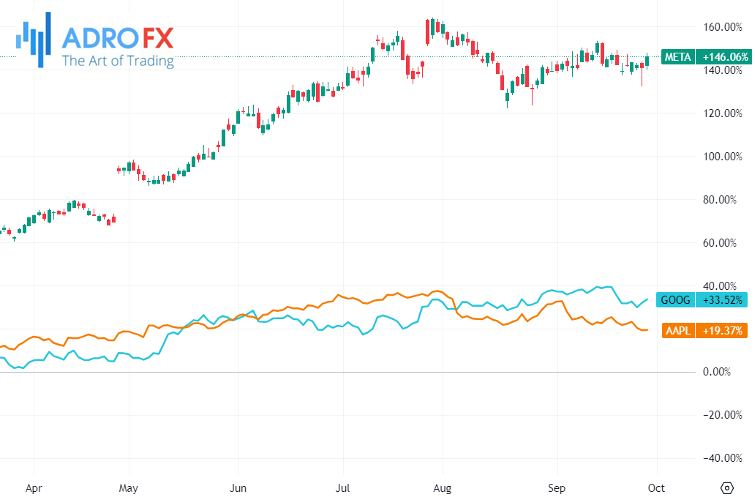
Investors are eagerly awaiting Fed Chair Jerome Powell's speech at a town hall meeting with educators scheduled for 4 p.m. ET. Powell is expected to address questions from the audience, and investors are keen to see if he would retract his hawkish remarks from the previous week.
In Asian trading on Friday, gold prices remained relatively stable, lingering close to a seven-month low that was reached earlier in the week. Market sentiment was primarily focused on the impending release of crucial US inflation data.
Gold found some relief as the US dollar retreated from its 10-month high, and there was a perceptible pause in the recent surge of Treasury yields.
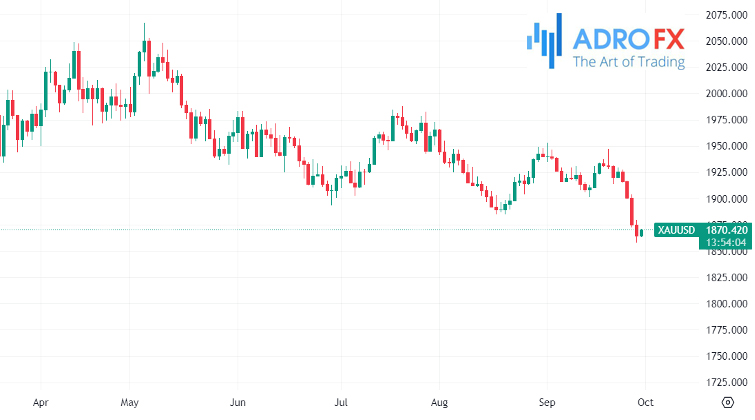
Nonetheless, gold prices were still grappling with significant losses for the month of September, with the bulk of these declines occurring over the past week. The Federal Reserve's announcement of prolonged higher interest rates played a pivotal role in these losses.
Furthermore, gold slipped below the critical $1,900 per ounce threshold, a development that could potentially foreshadow further declines and cast a shadow on the prospects of a recovery.
The US dollar experienced a 0.2% decline in Asian trading. This decline followed impressive milestones earlier in the week. Market participants were now keenly awaiting to see if this rally had staying power, with the release of personal consumption expenditures data - the Fed's favored inflation metric - scheduled for later in the day.

Analysts anticipate that the August reading will show an acceleration compared to the previous month, reflecting rising consumer inflation driven by elevated fuel prices and stable retail spending.
A stronger inflation figure provides the Federal Reserve with greater leeway to maintain higher interest rates. In its announcement last week, the central bank suggested the possibility of one more rate hike in 2023 and smaller rate cuts throughout 2024.
High interest rates typically do not bode well for gold, as they increase the opportunity cost associated with investing in the precious metal.
Apart from that, the initial batch of inflation data from Eurozone nations presented a mixed picture. In Germany, inflation exhibited a more pronounced decline than anticipated, dropping from 6.4% to 4.3% in September. This level had not been observed since before the conflict in Ukraine. A portion of this significant decline was attributed to base effects stemming from excluding public transport from the comparison and certain statistical anomalies.
Contrastingly, Spain witnessed an increase in prices for the second consecutive month, with inflation reaching 3.2%. This provided an indication of how surging energy prices and the weakening euro might influence inflation figures in the months ahead.
The EUR/USD tipped a toe below the 1.05 mark than rebounded on the back of a global retreat in the US dollar rally.

Later in the morning, the overall Eurozone inflation data for September will be unveiled. There is a hope that the actual data will align with the modest market expectations, potentially reinforcing the position of the doves within the European Central Bank (ECB). However, it's worth noting that this month's figures should be interpreted with caution.
